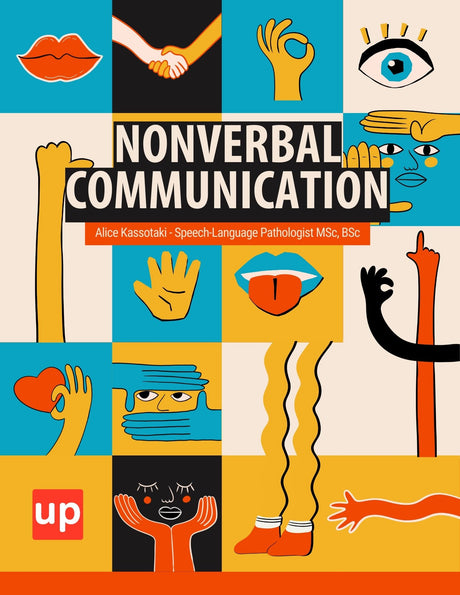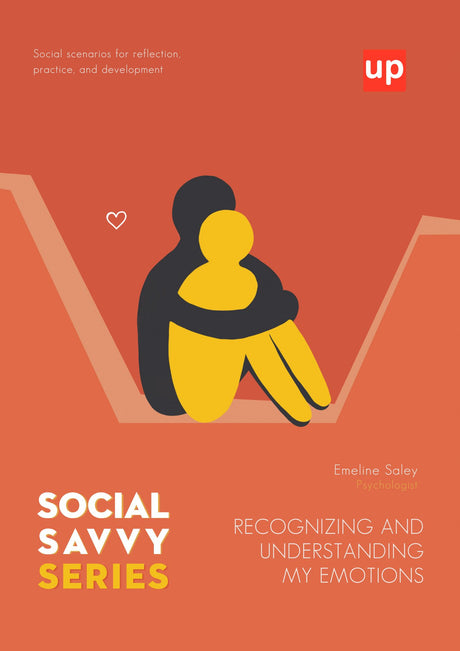Imagine standing in an environment full of professionals, eager to establish connections yet feeling isolated due to social barriers. Social participation constitutes a vital component of life, intricately linked to one's well-being and sense of belonging. Within the discipline of occupational therapy, establishing targeted goals for social participation can profoundly transform individuals' lives, providing them with the confidence and skills essential for meaningful engagement with the surrounding world.
Key Takeaways
- Occupational therapy goals for social participation are essential for improving individuals' confidence, social skills, and overall quality of life by fostering meaningful engagement in community and social settings.
- Utilizing the SMART framework ensures that therapy goals are specific, measurable, achievable, relevant, and timely, facilitating clear progress tracking and client-centered interventions.
- Collaboration among therapists, clients, families, and communities enhances goal-setting and therapy effectiveness, promoting sustained social participation and personal growth.
Occupational Therapy Goals for Social Participation: The Importance in Therapy

Occupational therapy plays a crucial role in facilitating social participation, a key component of community reintegration. This process not only involves engaging in meaningful activities but also embracing social roles safely and effectively. Occupational therapists focus on enhancing safety awareness, which is vital in social and recreational contexts.
Occupational therapy sets specific goals to help clients overcome barriers and societal stigma, particularly related to mental health, enabling fuller participation in community activities. By promoting the development of social skills, confidence, and resilience, therapists guide clients through social interactions within a supportive environment. This approach is instrumental in improving clients’ quality of life by opening doors to fulfilling hobbies and interests.
Key Benefits of Social Participation in Occupational Therapy:
- Development of Social Skills: Enhances ability to understand and respond to social cues.
- Improved Confidence: Builds self-assurance in social settings.
- Increased Resilience: Helps cope with social challenges and peer conflict.
- Enhanced Quality of Life: Fosters exploration of new interests and activities.
- Positive Social Interactions: Occupational therapy fosters positive relationships and engagement, promoting social skills and inclusive participation that support overall social-emotional development.
Thus, engaging in social participation through occupational therapy is a pathway to broader community integration and personal growth. Occupational therapy aims to enhance social participation by supporting clients in building skills for active involvement in community and social settings.
Developing Social Skills through Targeted Goals
Developing social skills is a crucial aspect of occupational therapy, focusing on enhancing individuals’ abilities to interact effectively within their environments. Occupational therapists often set specific, measurable goals to foster these skills. For instance, an aim might be for a client to participate in a group activity for a set duration without becoming upset. This type of SMART goal—Specific, Measurable, Achievable, Relevant, and Time-bound—ensures clear progress tracking. Occupational therapists help clients develop social skills such as initiating peer interactions and participating in group discussions to promote positive social engagement.
Occupational therapists work to build confidence and resilience in social situations by providing clients with safe, supportive environments. This approach often includes teaching essential skills such as making eye contact, taking turns in conversation, and identifying and expressing emotions. Additionally, clients are taught to understand and respect personal space and to demonstrate appropriate behavior during social interactions.
For students, personalized IEP (Individualized Education Program) goals might focus on communication, empathy, relationship building, and adaptability skills. Such goals are crucial for enhancing their social interactions, including respecting personal space and engaging in positive peer interactions.
Addressing mental health stigma through education and advocating for inclusive environments also plays a vital role in improving social interaction capabilities. By focusing on these targeted goals, occupational therapy can significantly boost an individual’s emotional regulation, cognitive skills, and overall quality of life.
Here is a sample table highlighting key social skills goals:
|
Goal |
Objective |
|---|---|
|
Eye contact |
Maintain eye contact during conversations. |
|
Turn-taking |
Take turns appropriately in group settings. |
|
Emotional expression |
Identify and express emotions correctly. |
|
Respecting personal space |
Maintain appropriate distance during conversations. |
Enhancing Fine and Gross Motor Skills for Social Activities
Occupational therapists play a crucial role in enhancing fine and gross motor skills to boost children’s participation in social activities. By addressing fundamental issues like weak grasp and visuoperceptual difficulties, therapists aim to increase a child’s independence in various settings, such as school and home. Developing fine motor skills, fine motor coordination, and handwriting skills is essential for successful participation in school and social activities. This collaborative effort with children and their parents leads to improvements in both self-worth and a sense of accomplishment—key factors for comfortable social participation.
To support motor skill development, occupational therapists often suggest adaptive tools and techniques that refine these skills, making social roles and activities more accessible. In addition, targeted exercises and activities can improve visual motor integration and play skills, supporting children's engagement in both structured and unstructured social play. The use of assistive devices and adaptive techniques contributes to effective engagement in social settings.
Moreover, therapists focus on creating a functional living environment through environmental modifications. These modifications indirectly aid the development and practical use of motor skills, thereby supporting social and recreational interactions.
Key Benefits:
- Increased independence in social contexts
- Improved self-worth and accomplishment
- Enhanced engagement in social roles
Ultimately, the enhancement of motor skills not only fosters individual growth but also enriches social interactions and participation.
Improving Sensory Processing Abilities

Improving sensory processing abilities is a core focus in pediatric occupational therapy. This therapeutic approach aims to enhance a child’s capacity to process and respond to sensory inputs effectively. Occupational therapists employ a variety of sensory inputs, such as tactile or auditory stimulation, to help children achieve functional outcomes. Sensory integration techniques are often used to help children develop sensory processing skills and improve sensory processing abilities, supporting their ability to interpret and respond to sensory information in daily routines.
Common tools and strategies include:
- Sensory-rich activities that encourage exploration of different textures, sounds, and movements.
- Use of sensory tools, such as weighted blankets or fidget toys, to support self-regulation.
- Activities that target sensory discrimination, such as differentiating textures or sounds, to further improve sensory processing skills.
- Goal-setting to improve sensory processing skills and promote participation in daily activities.
Key Aspects of Sensory Processing in Occupational Therapy:
- Goal Setting: Utilizing a structured SMART goal framework, therapists set clear, measurable goals, such as improving attention or increasing participation in daily activities.
- Long-term Goals: An example includes reducing tactile sensitivity to help children engage in family activities like meals.
- Short-term Goals: These might involve interactive exercises with specific textures to boost sensory engagement. For instance, children may interact with wet textures like slime to improve tolerance.
- Tools and Strategies: Incorporating sensory tools, such as fidgets and wiggle cushions, can greatly aid in managing sensory input effectively.
Through these targeted interventions, occupational therapy seeks to improve not only sensory processing but also the overall quality of life for children, facilitating better social interaction and participation in daily activities.
Setting Functional Goals for Real-World Application
Setting functional goals in occupational therapy is crucial for enhancing real-world application and improving quality of life. Occupational therapists focus on holistic development by addressing physical, cognitive, and social-emotional skills. To ensure these goals are effective, the SMART framework is often employed, which ensures that goals are specific, measurable, achievable, relevant, and timely. Setting achievable occupational therapy goals that address everyday tasks and time management skills is essential to promote independence and productivity.
Key Areas of Focus in Occupational Therapy Goals:
-
Activities of Daily Living (ADLs):
- Setting goals for self care skills such as dressing, grooming, and feeding is vital, with improving self care skills being a key focus for enhancing daily independence.
- Independent dressing
- Brushing teeth
- Maintaining proper seated posture
-
Social Participation:
- Engaging with peers
- Recognizing social cues
- Cooperative play
-
Emotional and Cognitive Skills:
- Emotional regulation
- Attention to tasks
- Cognitive skills enhancement
Occupational therapists also consider developmental aspects such as age, social-emotional learning, and sensory processing when setting goals. These client-centered goals are critical in fostering social interaction and supporting individuals with cognitive impairments or mental health challenges. Integrating adaptive techniques and using assistive devices when necessary, therapists develop practical strategies to help clients regain confidence and meaningful community engagement.
Creating SMART Goals: Framework for Success

The SMART framework is a cornerstone in occupational therapy, providing a structured approach to goal setting that ensures clarity and precision. By setting Specific, Measurable, Achievable, Relevant, and Timely goals, occupational therapists can design interventions that are both effective and client-centered.
Here’s how the SMART framework facilitates success:
- Specific: Goals are tailored to address distinct challenges, such as improving social skills or emotional regulation.
- Measurable: Progress is tracked through quantifiable milestones, making assessment straightforward.
- Achievable: Goals are realistically attainable, enhancing motivation with attainable steps. Setting achievable occupational therapy goals is essential to ensure clients experience meaningful progress, as realistic and measurable objectives help maintain motivation and provide clear milestones for advancement.
- Relevant: Each goal aligns with the client’s overall aspirations, improving quality of life.
- Timely: Time-bound goals ensure steady progress and provide motivation.
The SMART approach allows for the celebration of small victories, which is crucial in occupational therapy. Tracking meaningful progress is essential for maintaining engagement throughout the therapeutic process. This method not only highlights functional abilities but also incorporates adjustments based on evolving needs, ensuring that therapy interventions remain dynamic and effective. By breaking down ambitions into manageable steps, occupational therapists optimize the goal-setting process, addressing challenges like cognitive impairments or social interaction difficulties while enhancing daily living activities.
Short-Term and Long-Term Goal Examples
In occupational therapy, setting goals is crucial for fostering progress and enhancing a client’s quality of life. Occupational therapy goals are designed to help clients develop skills and problem solving abilities necessary to overcome challenges in daily life. Understanding the difference between short-term and long-term goals helps in creating an effective treatment plan.
Short-Term Goals:
- Typically achieved within one to three months.
- Focus on specific, manageable objectives.
Examples:
- Increase ergonomic awareness by adjusting desk setups.
- Take regular breaks to promote overall well-being.
Long-Term Goals:
- Extend over six months to a year.
- Aim for broader, substantial outcomes.
Examples:
- Develop stress management tools to significantly reduce perceived stress levels.
- Enhance coping strategies for dealing with daily challenges.
- Enhance problem solving skills to independently navigate social or academic challenges.
Short-term goals serve as stepping stones toward achieving larger long-term objectives. For instance, mastering ergonomic adjustments at work can be an initial step toward better stress management, developing problem-solving skills, and increased social participation over time.
|
Type of Goal |
Timeframe |
Example |
|---|---|---|
|
Short-Term |
1-3 months |
Improve workplace ergonomics |
|
Long-Term |
6 months to 1 year |
Develop effective stress management techniques; Enhance problem solving abilities |
This structured approach ensures that occupational therapists help clients make tangible improvements that enhance everyday skills, develop skills in problem solving, and improve social interactions.
Integrating Technology for Goal Achievement
Integrating technology into occupational therapy practices offers transformative advancements in setting, monitoring, and achieving therapy goals. AI scribes, such as Supanote.ai, play a pivotal role by providing data-driven insights, which significantly reduce documentation burdens. This seamless approach enables occupational therapists to streamline the process, allowing for more focused intervention strategies. Technology can also be used to plan and monitor therapy sessions, facilitate collaborative tasks among students, and support classroom discussion as part of occupational therapy interventions.
Case conceptualization and goal generation are enhanced through AI insights, as they allow for precise identification of occupational therapy goals. This technological integration also includes the analysis of inputs, improving the effectiveness of therapy plans. It enables therapists to employ SMART goals efficiently, addressing key areas such as social interaction, emotional regulation, and attention to tasks.
Benefits of Technology Integration:
- Effortless Documentation
- Data-Driven Insights
- Improved Therapy Efficacy
- Streamlined Goal Tracking
|
Feature |
Benefit |
|---|---|
|
AI Scribes |
Reduce documentation burden |
|
Data Analysis |
Enhance therapy plan efficacy |
|
Seamless Tracking |
Monitor progress and achievement |
By leveraging these advancements, clients experience improved quality of life through enhanced social participation, emotional skills, and community integration, aligning with the overarching mission of occupational therapy.
Utilizing Peer-Mediated Instruction in Therapy
Peer-mediated instruction in therapy is a potent method for enhancing social participation. By learning through interaction and mutual support, clients develop essential interpersonal skills. This collaborative approach aligns perfectly with goal-based development, catering to individual client needs through evidence-based interventions. Peer-mediated instruction incorporates cooperative learning, which encourages group participation and social interaction, while also providing opportunities for clients to learn coping strategies from their peers.
The strategy focuses on overcoming motivational barriers, often a challenge in therapeutic progress. By fostering engagement through peer encouragement and shared experiences, clients become more motivated. This, in turn, enhances their independence and community integration, providing them real-world practice opportunities.
Key Benefits of Peer-Mediated Instruction:
- Collaboration and Interaction: Promotes essential social skills in therapeutic settings.
- Goal-Based Development: Ensures tailored progress through personalized interventions.
- Motivational Support: Engages clients through peer encouragement.
- Real-World Practice: Prepares clients for independent living and community integration.
This approach holds immense potential for occupational therapists aiming to improve the quality of life for their clients. By incorporating peer support, therapists can significantly enhance social skills, emotional regulation, and overall client-centered goals. This makes peer-mediated instruction a valuable asset in occupational therapy practice.
Collaboration in Setting Client-Centered Goals

Collaboration in setting client-centered goals is essential in occupational therapy, particularly for students with Individualized Education Programs (IEPs). The occupational therapist plays a key role in facilitating collaborative goal-setting, ensuring that goals are meaningful and tailored to each client. This process often involves a multidisciplinary team, including speech-language pathologists, physical therapists, and classroom teachers, ensuring a holistic approach to a student’s educational program. By working together, the team tailors specific goals that cater to the unique needs and aspirations of the client, which enhances the therapy’s overall effectiveness.
These goals may be both collaborative and stand-alone, depending on the need for comprehensive strategies or focused interventions. Occupational therapy interventions are specifically designed to address mental health conditions and support client needs in areas such as employment, education, skills development, and lifestyle changes. Including the client’s input in the goal-setting process ensures that the goals are relevant and meaningful, aligning with their evolving needs and preferences. Ignoring this vital feedback can result in goals that lack significance for the client, diminishing the motivation and potential success of the therapy.
Key Elements of Collaborative Goal Setting:
- Team Involvement: Includes various professionals for a holistic approach.
- Client Input: Ensures goals are meaningful and relevant.
- Dual Approach: Incorporates collaborative and stand-alone goals for flexibility.
Ensuring that occupational therapy goals are client-centered fosters increased engagement and successful outcomes, ultimately improving the client’s quality of life.
Monitoring Progress and Adjusting Goals
Monitoring progress in occupational therapy is crucial for ensuring that goals remain relevant and effective. Regular assessments allow occupational therapists to adjust goals as needed, addressing unexpected challenges and non-linear progress. This ongoing evaluation can highlight areas requiring more attention or modifications, maintaining focus and efficiency in therapy. As part of progress tracking, therapists also monitor the effectiveness of emotional regulation strategies, such as deep breathing, to ensure clients are developing coping techniques that support meaningful progress and overall well-being.
To structure this process, therapists use SMART goals that are specific, measurable, achievable, relevant, and time-bound. Clear timelines help keep therapy on track and client-focused. Additionally, progress monitoring can indicate when additional services, such as speech or behavioral therapy, might be necessary, integrating a holistic approach to client care.
Tables and lists can aid in organizing assessments. For example:
|
Assessment Component |
Frequency |
Purpose |
|---|---|---|
|
Skill Evaluation |
Bi-weekly |
Measure improvement in social skills, cognitive skills, etc. |
|
Client Feedback |
Monthly |
Gather input on quality of life and satisfaction |
|
Goal Review |
Quarterly |
Adjust timelines and strategies |
In summary, regular evaluations not only sustain the effectiveness of therapy but also foster a client-centered approach that adapts to evolving needs and promotes better outcomes.
Conclusion
Occupational therapy goals for social participation play a vital role in helping individuals overcome barriers and develop the skills necessary for meaningful community engagement. By focusing on personalized, client-centered objectives that enhance social and emotional skills, motor abilities, sensory processing, and coping strategies, occupational therapists empower clients to build confidence, improve emotional regulation, and foster positive social interactions. Utilizing structured frameworks like SMART goals and promoting collaboration among therapists, clients, families, and communities ensures sustained progress and improved quality of life. Ultimately, occupational therapy supports individuals in achieving greater independence, resilience, and fulfillment through active participation in social and community settings.
Another valuable resource in occupational therapy is Upbility material, which offers practical tools and educational content designed to support skill development and independence. These materials can help clients practice social skills, coping strategies, and daily living tasks in a structured and engaging way.
Frequently Asked Questions (FAQs)
What are occupational therapy goals for social participation?
Occupational therapy goals for social participation focus on helping individuals develop the skills and confidence needed to engage meaningfully in social and community activities. These goals aim to improve social skills, emotional regulation, and participation in group settings to enhance overall quality of life.
How are occupational therapy goals for social participation set?
These goals are typically set using the SMART framework, ensuring they are Specific, Measurable, Achievable, Relevant, and Time-bound. Collaboration between occupational therapists, clients, families, and other professionals helps create personalized, client-centered goals that address individual needs.
What role does sensory processing play in social participation goals?
Sensory processing skills are crucial for managing sensory input in social environments. Improving sensory processing abilities helps individuals respond appropriately to sensory stimuli, which supports better engagement and comfort during social interactions.
How can occupational therapy help with emotional regulation in social settings?
Occupational therapists teach emotional regulation strategies, such as deep breathing and coping skills, to help clients manage their emotions effectively during social interactions. These skills contribute to improved social participation and positive relationships.
What types of activities are used to improve social skills in occupational therapy?
Therapists use a variety of activities, including cooperative play, group discussions, role-playing, and peer-mediated instruction, to develop social skills. These activities encourage positive social interactions and help clients practice appropriate responses in safe environments.
How is progress monitored in occupational therapy goals for social participation?
Progress is monitored through regular assessments, client feedback, and observation during therapy sessions. Adjustments to goals and interventions are made as needed to ensure continued meaningful progress and relevance to the client’s evolving needs.
How can families and communities support occupational therapy goals for social participation?
Families and communities can support these goals by encouraging practice of social skills in natural settings, providing positive reinforcement, and collaborating with therapists to create supportive environments that foster social engagement and independence.
Original content from the Upbility writing team. Reproducing this article, in whole or in part, without credit to the publisher is prohibited.
References
-
American Occupational Therapy Association. (2020). Occupational therapy practice framework: Domain and process (4th ed.). American Journal of Occupational Therapy, 74(Supplement_2), 7412410010. https://doi.org/10.5014/ajot.2020.74S2001
-
Case-Smith, J., & O'Brien, J. C. (2014). Occupational therapy for children and adolescents (7th ed.). Elsevier.
-
Schaaf, R. C., & Mailloux, Z. (2015). Clinician's guide for implementing Ayres Sensory Integration®: Promoting participation for children with autism. Elsevier Health Sciences.
-
Kielhofner, G. (2008). Model of human occupation: Theory and application (4th ed.). Lippincott Williams & Wilkins.
-
Coster, W., & Khetani, M. A. (2008). Measuring participation of children with disabilities: Issues and challenges. Disability and Rehabilitation, 30(8), 639-648. https://doi.org/10.1080/09638280701618977
-
King, G., Law, M., King, S., Rosenbaum, P., Kertoy, M., & Young, N. (2003). A conceptual model of the factors affecting the recreation and leisure participation of children with disabilities. Physical & Occupational Therapy in Pediatrics, 23(1), 63-90. https://doi.org/10.1300/J006v23n01_05
-
World Health Organization. (2001). International Classification of Functioning, Disability and Health (ICF). WHO.









